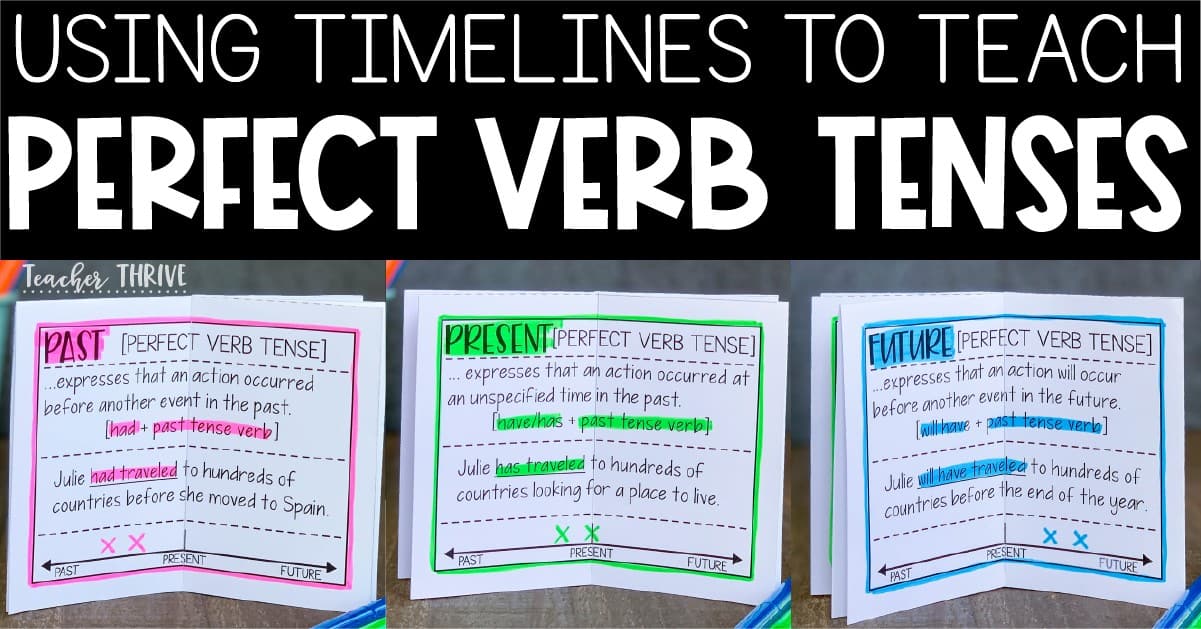
The perfect verb tenses are used to express completed actions that occurred before another point in time or event. Teaching perfect verb tenses can be a little tricky, so it’s important to find a balance between direct instruction and authentic language practice.
If you are working with limited English language learners or younger native speakers, you may want to begin by focusing on simple verb tenses and progressive verb tenses before proceeding.
It is helpful to use timelines, especially when teaching perfect verb tenses, which can be the most difficult for students to use correctly. The timelines provide excellent visual cues to help students conceptualize the correct context for using these verb forms.
Past Perfect Verb Tense
This aspect expresses that an action occurred before another event in the past. To form this aspect, use the word “had” + a past tense verb.

- Julie had traveled to hundreds of countries before she moved to Spain.
There are two Xs on the above timeline. The X on the left represents Julia completed travels, and the X on the right represents her move to Spain.
Present Perfect Verb Tense
This aspect expresses that an action occurred at an unspecified time in the past. To form this aspect, use the word “have” or “has” + a past tense verb.

- Julie has traveled to hundreds of countries looking for a place to live.
Unlike with the past present example, the sentence above doesn’t specify a second event. All we know is that Julie traveled to hundred of countries before now (the present); This is why the X on the right is located on “present” on the timeline.
Future Perfect Verb Tense
This form of the perfect verb tense expresses that an action will occur before another event in the future. To form this aspect, use the words “will have” + a past tense verb.

- Julie will have traveled to hundreds of countries before the end of the year.
Like the first timeline we looked at (past perfect), the two Xs represent two distinct events or actions. The first X represents the completion of Julie’s travels, and the second X represents the year ending.
Teaching Perfect Verb Tenses
You can use the information from above and the resources below to help your students master the use of perfect verb tenses.
1. Anchor Chart
You can use the timelines and examples from above to create an anchor chart with your students. The timelines are excellent visuals to reinforce each verb tense. Students can then reference the anchor chart as needed.

2. Mini-Book
After completing the anchor chart, guide students through completing this free mini-book. It comes in two versions: One version is completely filled out, and the second version contains blank spaces where students can take their own notes. Just enter your email address in the form below, and it will immediately be sent to you. If you don’t see it in your inbox, check your spam/promotions folder. To ensure delivery, avoid using a school email address.
3. Perfect Verb Tenses Teaching Unit
For more in-depth instruction, check out this unit on perfect verb tenses. It includes everything you need to teach, reinforce, and assess this grammar topic.

4. Khan Academy
Khan Academy’s unit on perfect verb tenses is another great resource to use. It also introduces simple verb tenses and progressive verb tenses, so it’s especially useful for limited English speakers.










